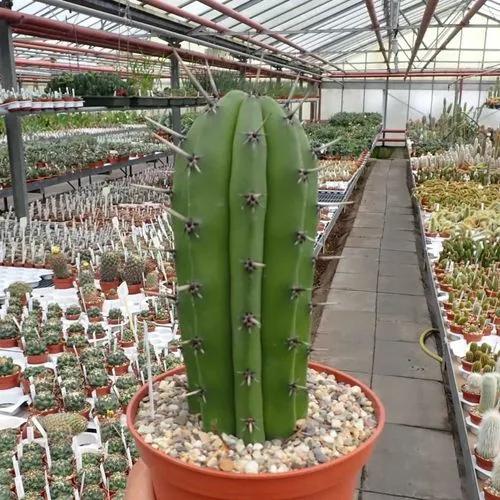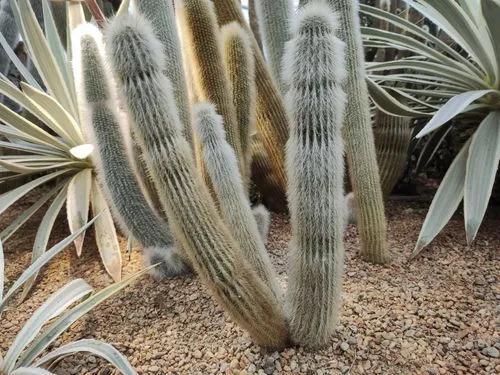The distinctive feature of the genus is the possession of an areole split into two clearly separated parts, one occurring at the apex of the tubercle, the other at its base. The apex part is spine bearing, and the base part is always spineless, but usually bears some bristles or wool. The base part of the areole bears the flowers and fruits, and is a branching point. The apex part of the areole does not carry flowers, but in certain conditions can function as a branching point as well. The plants are usually small, globose to elongated, the stems from 1 cm to 20 cm in diameter and from 1 cm to 40 cm tall, clearly tuberculate, solitary to clumping forming mounds of up to 100 heads and with radial symmetry. Tubercles can be conical, cylindrical, pyramidal or round. The roots are fibrous, fleshy or tuberous. The flowers are funnel-shaped and range from 7 mm to 40 mm and more in length and in diameter, from white and greenish to yellow, pink and red in colour, often with a darker mid-stripe; the reddish hues are due to betalain pigments as usual for Caryophyllales. The fruit is berry-like, club-shaped or elongated, usually red but sometimes white, magenta, yellow or green. Some species have the fruit embedded into the plant body. The seeds are black or brown, from 1 to 3 mm in size.
Popcorn Cactus Care
Mammillaria



How to Care for the Plant

Water

Water thimble cactus sparingly during the summer. Throughout the winter months, water only if the cactus looks wilted. Always allow the soil to dry between each watering. The cactus is likely to rot very quickly in soggy soil.

Pruning

To keep your cactus healthy, you should cut back the plant whenever it seems to be too large. Typically, if you are pruning to reduce the size of the plant, consider cutting back the plant by at least a third each year.

Fertilizer

Fertilizing while in active growing stages to encourage healthy growth, bright color, and flowering in species that have the capability.

Soil

Use a container filled with a potting mix for cacti and succulents, or a combination of regular potting mix and coarse sand. Handle thimble cactus carefully because the offshoots break off easily. However, any offshoots that fall on soil will root. Keep this in mind if you ever want to propagate a new cactus.

Temperature

Native to Central Mexico, thimble cactus (Mammillaria gracilis) is suitable for growing outdoors in USDA plant hardiness zones 9 through 11. Although it tolerates drought and extreme heat, it won't survive long if temperatures drop below 25 F. (-4 C.).

Container

Container gardens are the easiest way to instantly inject style into outdoor spaces.

Popularity

70 people already have this plant 43 people have added this plant to their wishlists
Discover more plants with the list below
Popular articles






